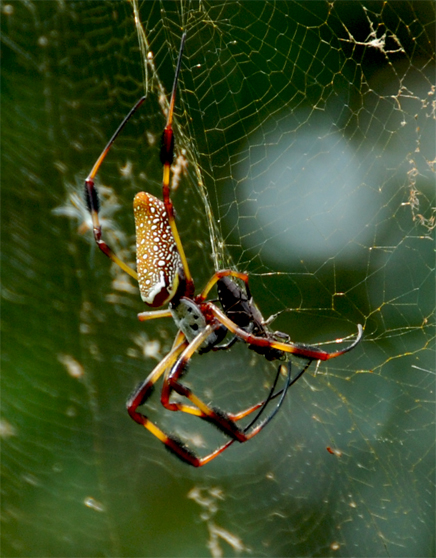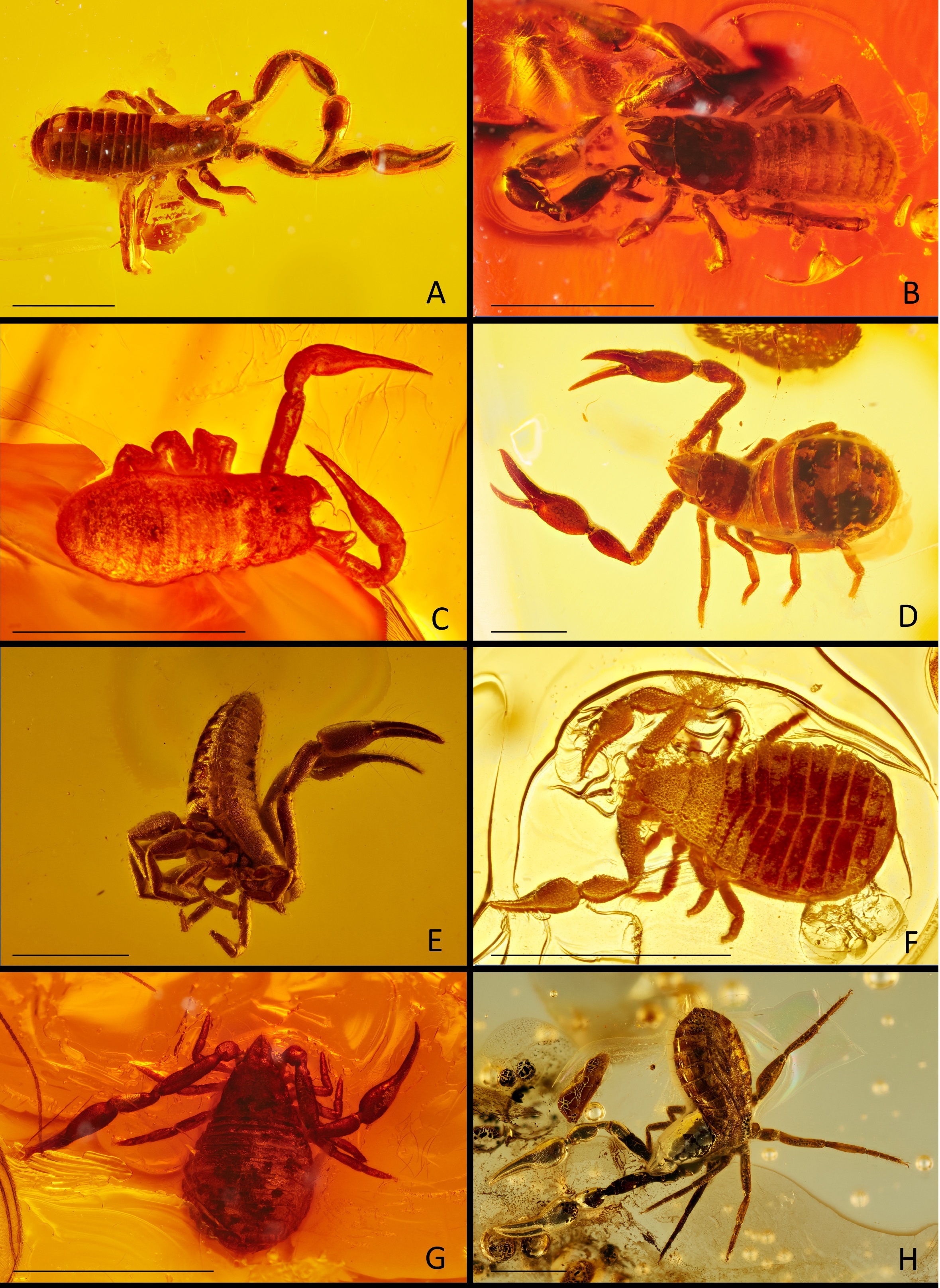|
Thenmus
''Thenmus'' is a genus of pseudoscorpions in the Menthidae family. It is endemic to Australia and was described in 1990 by Australian arachnologist Mark Harvey Mark Harvey (born 11 June 1965) is a former Australian rules football player and coach. He played over 200 games during fourteen seasons with the Essendon Football Club, winning three premierships, and was senior coach of Fremantle from 2007 t .... Species The genus contains the following species: * '' Thenmus aigialites'' Harvey, 1990 * '' Thenmus augustus'' Harvey, 2006 References Menthidae Pseudoscorpion genera Endemic fauna of Australia Pseudoscorpions of Australia Taxa described in 1990 Taxa named by Mark Harvey {{pseudoscorpion-stub ... [...More Info...] [...Related Items...] OR: [Wikipedia] [Google] [Baidu] |
Thenmus Augustus
''Thenmus augustus'' is a species of pseudoscorpion in the Menthidae family. It is endemic to Australia. It was described in 2006 by Australian arachnologist Mark Harvey. The specific epithet ''augustus'' refers to the type locality. Description The body length of the male holotype is 1.23 mm; that of the female paratype 1.57 mm. The colour is generally very pale, with the front of the carapace and the pedipalps reddish-brown. Distribution and habitat The species occurs in the Kimberley region of North West Australia. The type locality is 2.4 km north of Augustus Point on Augustus Island. The pseudoscorpions were found in rainforest plant litter. Behaviour The pseudoscorpions are terrestrial predators Predation is a biological interaction in which one organism, the predator, kills and eats another organism, its prey. It is one of a family of common feeding behaviours that includes parasitism and micropredation (which usually do not kill .... Ref ... [...More Info...] [...Related Items...] OR: [Wikipedia] [Google] [Baidu] |
Thenmus Aigialites
''Thenmus aigialites'' is a species of pseudoscorpion in the Menthidae family. It is endemic to Australia. It was described in 1990 by Australian arachnologist Mark Harvey. Distribution and habitat The species occurs in the Mackay Region of coastal eastern Queensland. The type locality is Finlaysons Point, 2 km north-west of Seaforth. The pseudoscorpions were found in plant litter. Behaviour The pseudoscorpions are terrestrial predators Predation is a biological interaction in which one organism, the predator, kills and eats another organism, its prey. It is one of a family of common feeding behaviours that includes parasitism and micropredation (which usually do not kill .... References Menthidae Endemic fauna of Australia Pseudoscorpions of Australia Arthropods of Queensland Animals described in 1990 Taxa named by Mark Harvey {{pseudoscorpion-stub ... [...More Info...] [...Related Items...] OR: [Wikipedia] [Google] [Baidu] |
Menthidae
Menthidae is a family of pseudoscorpions, first described by Joseph Conrad Chamberlin Joseph Conrad Chamberlin (December 23, 1898 – July 17, 1962) was an American arachnologist who studied mainly pseudoscorpions. A native of Utah, he studied primarily at Stanford University while working most of his career in Oregon for the U.S. D ... in 1930. Genera , the ''World Pseudoscorpiones Catalog'' accepted the following five genera: * '' Menthus'' Chamberlin, 1930 * '' Oligomenthus'' Beier, 1962 * '' Paramenthus'' Beier, 1963 * '' Pseudomenthus'' Mahnert, 2007 * '' Thenmus'' Harvey, 1990 References Pseudoscorpion families Taxa named by Joseph Conrad Chamberlin {{pseudoscorpion-stub ... [...More Info...] [...Related Items...] OR: [Wikipedia] [Google] [Baidu] |
Mark Harvey (arachnologist)
Mark Stephen Harvey (born 17 September 1958) is a museum scientist and biologist. Since 1989 he has been based at the Western Australian Museum as Curator of Arachnids and Myriapods. Career Harvey graduated from Monash University in 1983 with a PhD titled "Contributions to the systematics of the Pseudoscorpionida (Arachnida) : the genus ''Synsphyronus'' Chamberlin (Garypidae) and the family Sternophoridae". His research interests include the systematics and evolution of arachnids and other terrestrial invertebrates. He has published 374 scientific papers or books, and was instrumental in the promotion of short-range endemism Short-range endemic invertebrates through a paper outlining the criteria for recognising taxa that could be considered short-range endemics. His primary research interests are with Pseudoscorpions. As of 2024, he has described 888 new species, 93 new genera and four new families including the aquatic mite family Pezidae and the pseudoscorpion family Lar ... [...More Info...] [...Related Items...] OR: [Wikipedia] [Google] [Baidu] |
Genus
Genus (; : genera ) is a taxonomic rank above species and below family (taxonomy), family as used in the biological classification of extant taxon, living and fossil organisms as well as Virus classification#ICTV classification, viruses. In binomial nomenclature, the genus name forms the first part of the binomial species name for each species within the genus. :E.g. ''Panthera leo'' (lion) and ''Panthera onca'' (jaguar) are two species within the genus ''Panthera''. ''Panthera'' is a genus within the family Felidae. The composition of a genus is determined by taxonomy (biology), taxonomists. The standards for genus classification are not strictly codified, so different authorities often produce different classifications for genera. There are some general practices used, however, including the idea that a newly defined genus should fulfill these three criteria to be descriptively useful: # monophyly – all descendants of an ancestral taxon are grouped together (i.e. Phylogeneti ... [...More Info...] [...Related Items...] OR: [Wikipedia] [Google] [Baidu] |
Pseudoscorpions
Pseudoscorpions, also known as false scorpions or book scorpions, are small, scorpion-like arachnids belonging to the order Pseudoscorpiones, also known as Pseudoscorpionida or Chelonethida. Pseudoscorpions are generally beneficial to humans because they prey on clothes moth larvae, carpet beetle larvae, booklice, ants, mites, and small flies. They are common in many environments, but they are rarely noticed due to their small size. When people see pseudoscorpions, especially indoors, they often mistake them for ticks or small spiders. Pseudoscorpions often carry out phoresis, a form of commensalism in which one organism uses another for the purpose of transport. Characteristics Pseudoscorpions belong to the class Arachnida. They are small arachnids with a flat, pear-shaped body, and pincer-like pedipalps that resemble those of scorpions. They usually range from in length.Pennsylvania State University, DepartmentEntomological Notes: Pseudoscorpion Fact Sheet/ref> The large ... [...More Info...] [...Related Items...] OR: [Wikipedia] [Google] [Baidu] |
Family (biology)
Family (, : ) is one of the eight major hierarchical taxonomic ranks in Linnaean taxonomy. It is classified between order and genus. A family may be divided into subfamilies, which are intermediate ranks between the ranks of family and genus. The official family names are Latin in origin; however, popular names are often used: for example, walnut trees and hickory trees belong to the family Juglandaceae, but that family is commonly referred to as the "walnut family". The delineation of what constitutes a family—or whether a described family should be acknowledged—is established and decided upon by active taxonomists. There are not strict regulations for outlining or acknowledging a family, yet in the realm of plants, these classifications often rely on both the vegetative and reproductive characteristics of plant species. Taxonomists frequently hold varying perspectives on these descriptions, leading to a lack of widespread consensus within the scientific community ... [...More Info...] [...Related Items...] OR: [Wikipedia] [Google] [Baidu] |
Endemism
Endemism is the state of a species being found only in a single defined geographic location, such as an island, state, nation, country or other defined zone; organisms that are indigenous to a place are not endemic to it if they are also found elsewhere. For example, the Cape sugarbird is found exclusively in southwestern South Africa and is therefore said to be ''endemic'' to that particular part of the world. An endemic species can also be referred to as an ''endemism'' or, in scientific literature, as an ''endemite''. Similarly, many species found in the Western ghats of India are examples of endemism. Endemism is an important concept in conservation biology for measuring biodiversity in a particular place and evaluating the risk of extinction for species. Endemism is also of interest in evolutionary biology, because it provides clues about how changes in the environment cause species to undergo range shifts (potentially expanding their range into a larger area or b ... [...More Info...] [...Related Items...] OR: [Wikipedia] [Google] [Baidu] |
Arachnology
Arachnology is the science, scientific study of arachnids, which comprise spiders and related invertebrates such as scorpions, Pseudoscorpionida, pseudoscorpions, Opiliones, harvestmen, Tick, ticks, and mites. Those who study spiders and other arachnids are arachnologists. More narrowly, the study of spiders alone (Order (biology), order Araneae) is known as araneology. The word "wiktionary:arachnology, arachnology" derives from the Ancient Greek words , ''arachnē'', "spider"; and , ''-logia'', "the study of a particular subject". The greek word for "spider" itself refers to Arachne, the female protagonist of an ancient tale of the Greek mythology, Greek Mythology. Arachnology as a science Arachnologists are primarily responsible for biological classification, classifying arachnids and studying aspects of their biology. In the popular imagination, they are sometimes referred to as spider experts. Disciplines within arachnology include naming species and determining their phylog ... [...More Info...] [...Related Items...] OR: [Wikipedia] [Google] [Baidu] |
Pseudoscorpion Genera
Pseudoscorpions, also known as false scorpions or book scorpions, are small, scorpion-like arachnids belonging to the order Pseudoscorpiones, also known as Pseudoscorpionida or Chelonethida. Pseudoscorpions are generally beneficial to humans because they prey on clothes moth larvae, carpet beetle larvae, booklice, ants, mites, and small flies. They are common in many environments, but they are rarely noticed due to their small size. When people see pseudoscorpions, especially indoors, they often mistake them for ticks or small spiders. Pseudoscorpions often carry out phoresis, a form of commensalism in which one organism uses another for the purpose of transport. Characteristics Pseudoscorpions belong to the class Arachnida. They are small arachnids with a flat, pear-shaped body, and pincer-like pedipalps that resemble those of scorpions. They usually range from in length.Pennsylvania State University, DepartmentEntomological Notes: Pseudoscorpion Fact Sheet/ref> The large ... [...More Info...] [...Related Items...] OR: [Wikipedia] [Google] [Baidu] |
Endemic Fauna Of Australia
Endemism is the state of a species being found only in a single defined geographic location, such as an island, state, nation, country or other defined zone; organisms that are indigenous to a place are not endemic to it if they are also found elsewhere. For example, the Cape sugarbird is found exclusively in southwestern South Africa and is therefore said to be ''endemic'' to that particular part of the world. An endemic species can also be referred to as an ''endemism'' or, in scientific literature, as an ''endemite''. Similarly, many species found in the Western ghats of India are examples of endemism. Endemism is an important concept in conservation biology for measuring biodiversity in a particular place and evaluating the risk of extinction for species. Endemism is also of interest in evolutionary biology, because it provides clues about how changes in the environment cause species to undergo range shifts (potentially expanding their range into a larger area or becomin ... [...More Info...] [...Related Items...] OR: [Wikipedia] [Google] [Baidu] |
Pseudoscorpions Of Australia
Pseudoscorpions, also known as false scorpions or book scorpions, are small, scorpion-like arachnids belonging to the order Pseudoscorpiones, also known as Pseudoscorpionida or Chelonethida. Pseudoscorpions are generally beneficial to humans because they prey on clothes moth larvae, carpet beetle larvae, booklice, ants, mites, and small flies. They are common in many environments, but they are rarely noticed due to their small size. When people see pseudoscorpions, especially indoors, they often mistake them for ticks or small spiders. Pseudoscorpions often carry out phoresis, a form of commensalism in which one organism uses another for the purpose of transport. Characteristics Pseudoscorpions belong to the class Arachnida. They are small arachnids with a flat, pear-shaped body, and pincer-like pedipalps that resemble those of scorpions. They usually range from in length.Pennsylvania State University, DepartmentEntomological Notes: Pseudoscorpion Fact Sheet/ref> The large ... [...More Info...] [...Related Items...] OR: [Wikipedia] [Google] [Baidu] |





